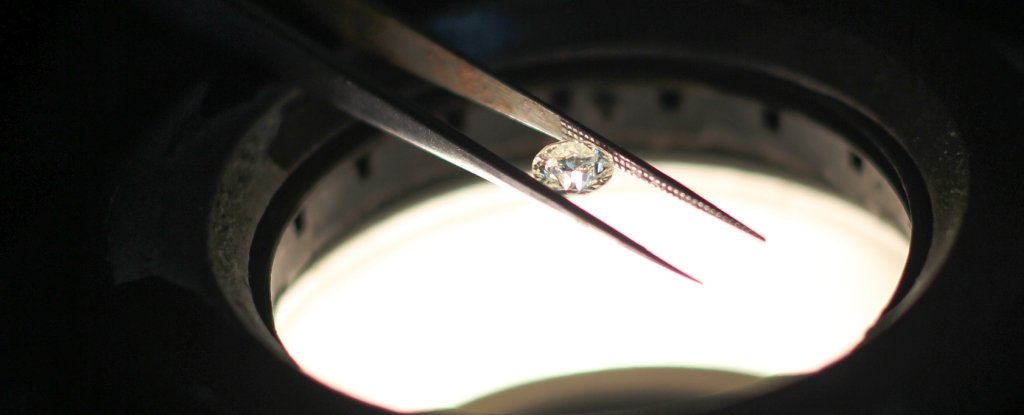Crushing Diamonds With Forces Greater Than Earth’s Core Reveals They Are ‘Metastable’

Diamonds can handle a little pressure. Actually, revise that – diamonds can handle a lot of pressure. In a series of new experiments, scientists have found that diamonds retain their crystal structure at pressures five times higher than that of Earth’s core.
This contradicts predictions that diamond should transform into an even more stable structure under extremely high pressure, suggesting that diamond sticks to a form under conditions where another structure would be more stable, what is referred to as being ‘metastable’.
The discovery has implications for modelling high-pressure environments such as the cores of planets rich in carbon.
Carbon is pretty much as common as it gets. It’s the fourth-most abundant element in the Universe, and can be found in exoplanets and stars and the space in between. It’s also a primary ingredient of all known life on Earth. Without it, we wouldn’t exist; that’s why we refer to ourselves as carbon-based life.
Thus, carbon is of intense interest to scientists of all kinds. However, one place where carbon can be found – the cores of carbon-rich exoplanets – is very hard to study. The high pressures present there are hard to replicate and, once high pressures are achieved, the material being squeezed is tricky to probe.
We know that carbon has several allotropes, or variant structures, at ambient pressures that have significantly different physical properties. Charcoal, graphite and diamond all form at different pressures, with diamond occurring at higher pressures deep underground, starting at around 5 or 6 gigapascals.
The pressure at Earth’s core is up to around 360 gigapascals. At even higher pressures – around 1,000 gigapascals, just over 2.5 times Earth’s core pressure, scientists have predicted that carbon would transform again into several new structures, ones we have never seen or achieved before.
One method of achieving insanely high pressures involves the use of a diamond anvil and shock compression. With this method, hydrocarbon has been subjected to 45,000 gigapascals. That method tends to destroy the sample before its structure can be probed.
A team led by physicist Amy Lazicki Jenei of the Lawrence Livermore National Laboratory found another way to make it work. They used ramp-shaped laser pulses to squeeze a sample of solid carbon, to a pressure of 2,000 gigapascals. Simultaneously, nanosecond-duration time-resolved X-ray diffraction was used to probe the crystal structure of the sample.
This more than doubled the previous pressure at which a material has been probed using X-ray diffraction. And the results surprised the team.
“We discovered that, surprisingly, under these conditions carbon does not transform to any of the predicted phases but retains the diamond structure up to the highest pressure,” Jenei said.
“The same ultra-strong interatomic bonds (requiring high energies to break), which are responsible for the metastable diamond structure of carbon persisting indefinitely at ambient pressure, are also likely impeding its transformation above 1,000 gigapascals in our experiments.”
In other words, diamond doesn’t relax back into graphite when it’s brought out from deep underground: from higher pressures to lower. The strength that prevents that reversion could be why diamond doesn’t rearrange into another allotrope at even higher pressures than those it formed in.
This discovery could change how scientists model and analyse carbon-rich exoplanets, including the mythical diamond planets.
Meanwhile, there is more work to be done to understand the result. The team isn’t entirely sure why diamond is so strong – more research will be needed in order to figure out why diamond is metastable across a wide range of pressures.
“Whether nature has found a way to surmount the high energy barrier to formation of the predicted phases in the interiors of exoplanets is still an open question,” Jenei said.
“Further measurements using an alternate compression pathway or starting from an allotrope of carbon with an atomic structure that requires less energy to rearrange will provide further insight.”
The research has been published in Nature.
